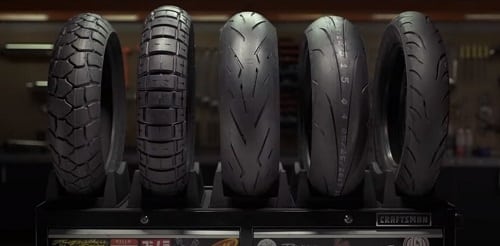Deprecated: mb_convert_encoding(): Handling HTML entities via mbstring is deprecated; use htmlspecialchars, htmlentities, or mb_encode_numericentity/mb_decode_numericentity instead in /home/u598013642/domains/motorcyclegear101.com/public_html/wp-content/themes/acabado/functions.php on line 2160
Deprecated: mb_convert_encoding(): Handling HTML entities via mbstring is deprecated; use htmlspecialchars, htmlentities, or mb_encode_numericentity/mb_decode_numericentity instead in /home/u598013642/domains/motorcyclegear101.com/public_html/wp-content/themes/acabado/functions.php on line 2160
Deprecated: mb_convert_encoding(): Handling HTML entities via mbstring is deprecated; use htmlspecialchars, htmlentities, or mb_encode_numericentity/mb_decode_numericentity instead in /home/u598013642/domains/motorcyclegear101.com/public_html/wp-content/themes/acabado/functions.php on line 2160
Deprecated: mb_convert_encoding(): Handling HTML entities via mbstring is deprecated; use htmlspecialchars, htmlentities, or mb_encode_numericentity/mb_decode_numericentity instead in /home/u598013642/domains/motorcyclegear101.com/public_html/wp-content/themes/acabado/functions.php on line 2160
Deprecated: mb_convert_encoding(): Handling HTML entities via mbstring is deprecated; use htmlspecialchars, htmlentities, or mb_encode_numericentity/mb_decode_numericentity instead in /home/u598013642/domains/motorcyclegear101.com/public_html/wp-content/themes/acabado/functions.php on line 2160
Deprecated: mb_convert_encoding(): Handling HTML entities via mbstring is deprecated; use htmlspecialchars, htmlentities, or mb_encode_numericentity/mb_decode_numericentity instead in /home/u598013642/domains/motorcyclegear101.com/public_html/wp-content/themes/acabado/functions.php on line 2160
Deprecated: mb_convert_encoding(): Handling HTML entities via mbstring is deprecated; use htmlspecialchars, htmlentities, or mb_encode_numericentity/mb_decode_numericentity instead in /home/u598013642/domains/motorcyclegear101.com/public_html/wp-content/themes/acabado/functions.php on line 2160
Motorcycle tires are among the topics and discussions usually reserved for politics and religion. That makes sense because you have to think about replacing tires from time to time, but do they need replacing in pairs?
By that, I mean can you mix and match different brands and types of tires front and rear? The tire manufacturers say definitely not, but a lot of riders think this is just a tactic to boost sales. There is, however, a technical explanation behind that recommendation.
Tires are developed in pairs, so traction and handling qualities are determined by testing two of the same tire on the same motorcycle.
The tire manufacturers are cautious, as you would imagine, and they’re loathed to recommend that one of their tires be matched with a complete unknown on the other side of the bike.
They don’t know, and frankly, you don’t either, if that combination will handle naturally and retain an acceptable level of stability.
So your dirt bike guys are about to reach for the keyboard but hang on, that recommendation applies mostly to street bikes where the precise shape and size of the tire influences traction and handling.
It’s a totally different deal offroad. Their mixing and matching are commonplace, usually by riders Looking for the best combo of traction handling for their particular kind of terrain with their particular bike.
Plus, with the bike always braking and gaining traction, things like exact profiles and tread patterns aren’t quite as influential in the way the bike handles.
That means the main recommendation is to avoid going to the different front to rear tires, like having an aggressive nobbly on the rear and a street bias tire on the front.
Each provides a very different kind of traction over various terrains, meaning that your bike’s handling could change pretty dramatically.
If you’re going to mix and match brands, do so within a fairly narrow range of types, like sticking to a pair of 50/50 tires or maybe an 80/10 tire pair at each end of the bike.
Certainly more often than replacing your bike and getting good advice is hard. So much of it is purely subjective, and it isn’t easy to know what is right.
We get plenty of questions about tires, including these. Do I have to run the stock size and do I need to replace tires and pairs?
You generally want to stick close to stock tire sizes because each tire is meant to fit on rims at a certain width and for purposes of clearance.
So let’s say you’re going from a 130-millimeter wide tire to a 150. assuming the larger tire will fit inside the swingarm and clear other obstacles, you’ll need to check the recommended rim width.
For example, Dunlop expects a 130 tire to go on a three-inch wide rim, but the 150 needs a four-and-a-quarter-inch rim. That’s a big difference.
So what happens? If you do that, it deforms the tire if you put the big tire on the small rim.
It makes the tread profile more narrow, which can hurt traction. It also changes the way the riding loads are carried through the sidewalls.
In this case, going up two sizes is not recommended, although one size should be fine.
When Should You Replace Motorcycle Tires and Why

Tires are temporary, like new car smell, cheap shoes, and ripe avocados. They don’t last forever.
Stick around for a couple of minutes, and I’ll show you how to know when it’s time for you to swap to new tires.
We feel strongly about motorcycle tires because they’re so influential in the bike’s handling and performance.
Some riders have serious short attention span syndrome with tires, while others seem intent on getting every last mile from them.
Wherever you land on the spectrum, it’s worth keeping in mind some of the reasons why you want to consider new tires before the next riding season begins.
First, the current tires maybe just worn out. For most heavier motorcycles, the weak spot is the centered tread of the rear tire.
This is where the bike carries a lot of weight and puts down all of its power.
Over the years, tire manufacturers have experimented with different compounds and even different rubber formulations for the center inside of the tread.
This effort usually results in better wear without giving up grip, but eventually, you’ll end up with a rear tire that’s flat across the profile.
What comes next boils down to two main problems. The first is handling. Tires are designed to perform best on their original profiles, and that’s how the bike manufacturer tests.
A square rear tire will make the steering feel well weird, and the thing is, this happens slowly over time, so your bike’s handling will go off but not all at once. That’s why when you put new tires on, it feels great.
The second issue is durability. By definition, a worn tire has less rubber between the road and the carcass, making it more prone to flats from debris.
No, it’s not a conspiracy by the tire companies to get you to buy fresh rubber thinner tread is just more susceptible to punctures.
Beyond handling and durability, the last wear item to consider involves cracks and other damage to the sidewalls or carcass.
Any bulging of the sidewalls are visible cracking as a reason for tire replacement.
Now every tire has a lot of carefully engineered structure built-in and damaged from hard writing, or even a commute through potholed streets can really wreak havoc.
There are other reasons to consider changing your tires besides wear, which includes a change entire type.
By that, I mean switching from the original tire, which is usually chosen for a typical owner, to something that more accurately reflects the kind of riding you want to do.
You can check out our dual sports tires article on which tires to choose, but while you’re here, consider how much more capable even a 50/50 tire will be if you ride off-road.
Upgrading to a tire that really works with your mission, we’ll make all kinds of difference in longevity and rider confidence.
Every tire is a compromise, but if you’re trying to ride trails on what is essentially a street tire, are you leaving a lot of performance and confidence on the table?
Finally, when you’re ready to change tires on your bike, think about the tubes.
If you’re riding with spoke wheels that require inner tubes, just go ahead and change the tubes now.
They are prone to wear, and a good aftermarket tube can be more durable than what the factory stuffed in there in the first place.
Related Articles
- 2 Reasons Why A Motorcycle’s Rear Tire Wear on One Side?
 Tires and tire pressure are like oil; everybody has an opinion and will fight to defend it. So why does the outside of the rear tire wear down on the side?
Tires and tire pressure are like oil; everybody has an opinion and will fight to defend it. So why does the outside of the rear tire wear down on the side? - Should You Replace Motorcycle Tires In Pairs? (Mythe Busted)
 Motorcycle tires are among the topics and discussions usually reserved for politics and religion. That makes sense because you have to think about replacing tires from time to time, but
Motorcycle tires are among the topics and discussions usually reserved for politics and religion. That makes sense because you have to think about replacing tires from time to time, but - 3 Reasons Why Motorcycle Tires so Expensive
 A common question that we get from first-time motorcycle buyers is why a motorcycle tire is so expensive? Three main components contribute to the higher tire price compared to a
A common question that we get from first-time motorcycle buyers is why a motorcycle tire is so expensive? Three main components contribute to the higher tire price compared to a - What Size Motorcycle Tire Do I Need & Why
 Today we’re looking at how to choose the size, the speed, the load, and the construction of the tire for your bike. We will also look at what specifications you
Today we’re looking at how to choose the size, the speed, the load, and the construction of the tire for your bike. We will also look at what specifications you - When To Change Motorcycle Tires – Myth vs. Fact
 How do you know when to change motorcycle tires? Stick around we’re gonna go over some of the telltale signs that your tires are worn out with our detailed video guide on when to change motorcycle tires.
How do you know when to change motorcycle tires? Stick around we’re gonna go over some of the telltale signs that your tires are worn out with our detailed video guide on when to change motorcycle tires.
Previous Article: Why Motorcycle Tires so Expensive
Next Article: What Size Motorcycle Tire Do I Need

